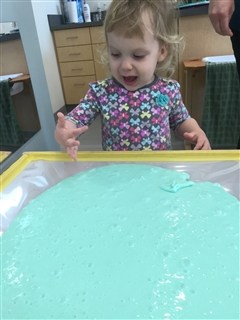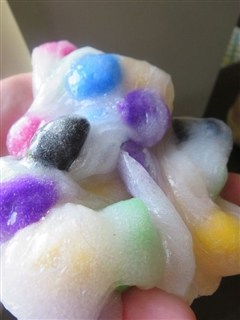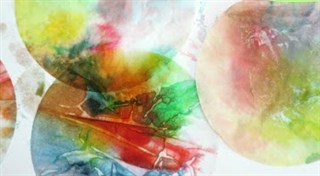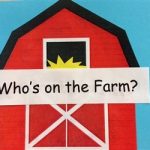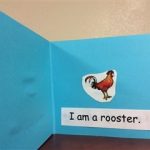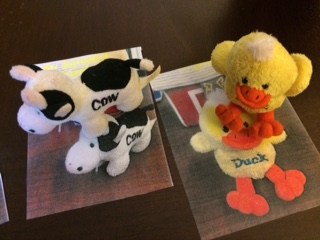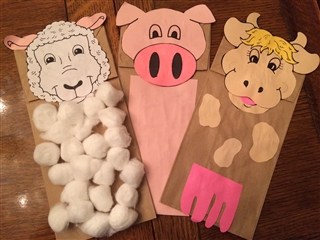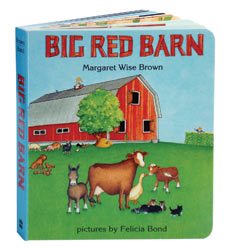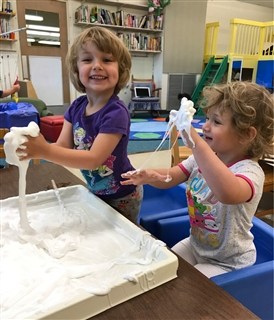Materials
Book: Big Red Barn by Margaret Wise Brown
Small plastic farm animals and/or pictures of animals that live on the farm
Container of shredded yellow paper
Literacy Activites
Picture Walk: “Walk” through the book, page by page, and identify as many animals as possible. Ask, “What does a pig say?”, “What does a horse say?”, etc. Once you have taken a picture walk, if your child is interested, read the story aloud. For toddlers, you may want to read the book another day. They may want to spend some time playing with the plastic farm animals.
Read Aloud: Find a cozy spot to read the story with your child. Take time to examine each picture and encourage your child to say and point to the animals and make the animal sounds as you read the story together. You may also want to ask him to share what else he sees in the picture. Invite your child to find the matching plastic animal or picture of the animal. At the end of the story ask content questions such as,
1. “How many horses were in the story?”
2. “How many eggs did the hen lay?”
3. “Which animal squealed?”
4. “Where were the children?”
Math Activities
Make a tally mark for every animal that is introduced in the story. At the end of the story, count the talliies and remind your child that each tally represented an animal on the farm. Ask, “How many animals live on the farm?”
Sort the animals using various criteria (i.e. animals that have wings, animals with four legs; big and little, those that sleep during the day verses animals that sleep at night)
Science
introduce names of adult animals, male and female, and baby animals (sow, piglet, mare, foul, cow, calf, hen, rooster, chicks). Look for pictures of adult and baby animals. Invite your child to match the baby with his parent.
Visit a farm
After reading the book, visit a local farm or petting zoo. See a cow being milked, feed the baby goats, look for eggs in a hen house, watch the pigs roll in the mud.
Sensory
Shred yellow paper and place the shredded paper in a plastic tub. HIde the farm animals in the tub and invite your toddler to find all the animals. Name and count the animals.
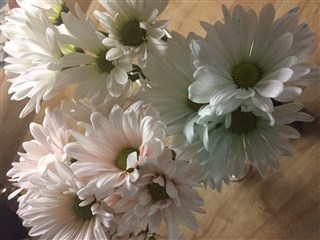 Directions
Directions 



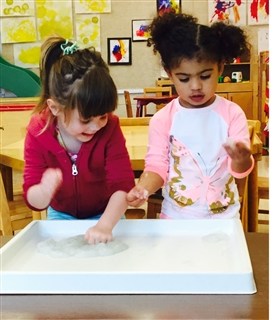 Ingredients
Ingredients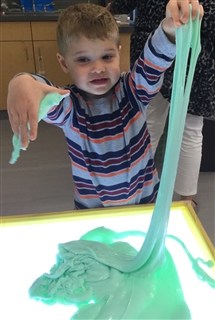 several squirts of liquid watercolor and stir well. Add liquid starch to glue a few tablespoons at a time. Stir thoroughly. Continue to add liquid starch until slime no longer sticks to the sides of the container. It should form a big clump in the center of the container.
several squirts of liquid watercolor and stir well. Add liquid starch to glue a few tablespoons at a time. Stir thoroughly. Continue to add liquid starch until slime no longer sticks to the sides of the container. It should form a big clump in the center of the container. Add glitter, pompoms, googly eyes, plastic spiders, foam shapes, beads, or other lightweight objects to the slime after it is made
Add glitter, pompoms, googly eyes, plastic spiders, foam shapes, beads, or other lightweight objects to the slime after it is made
